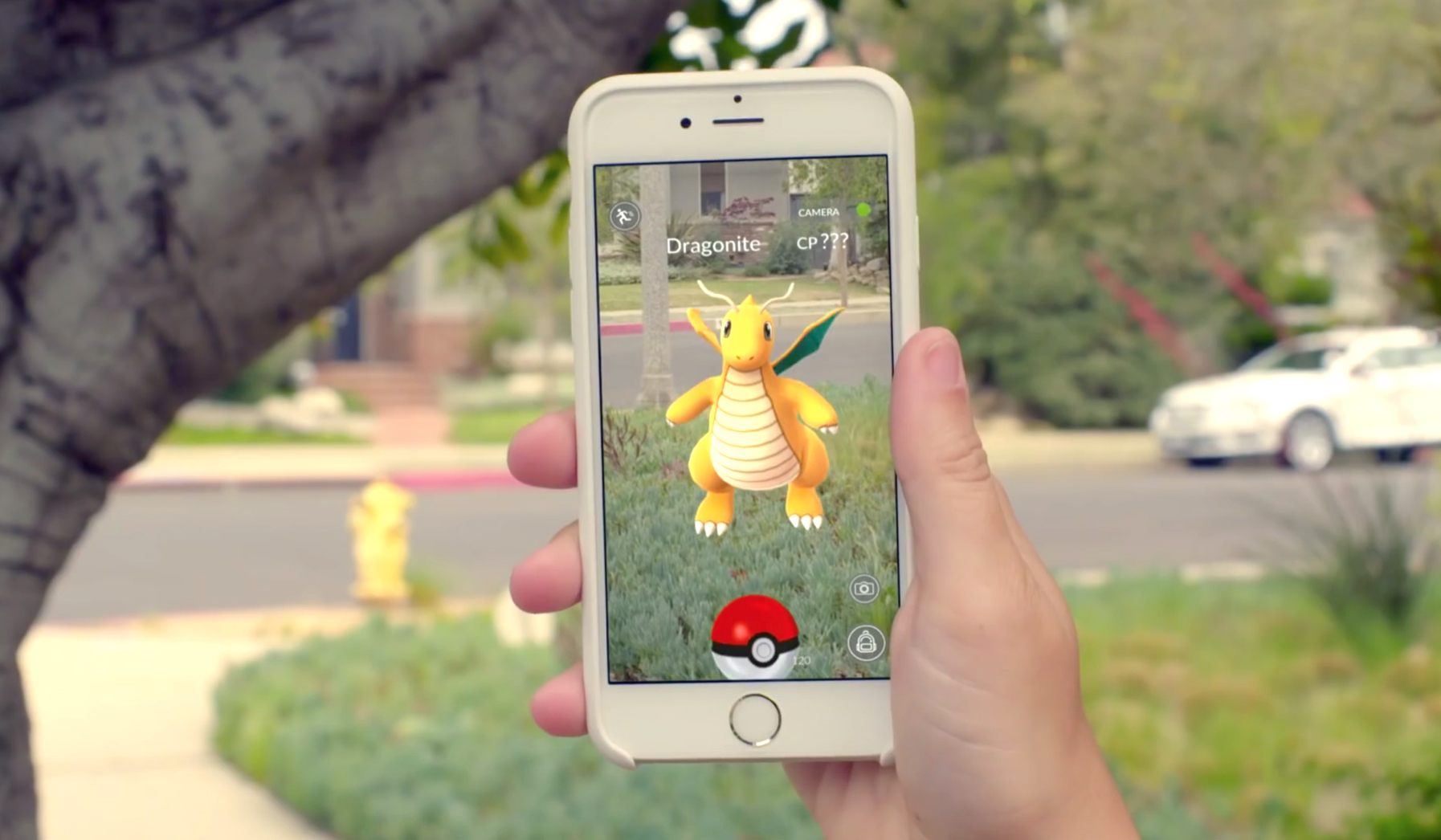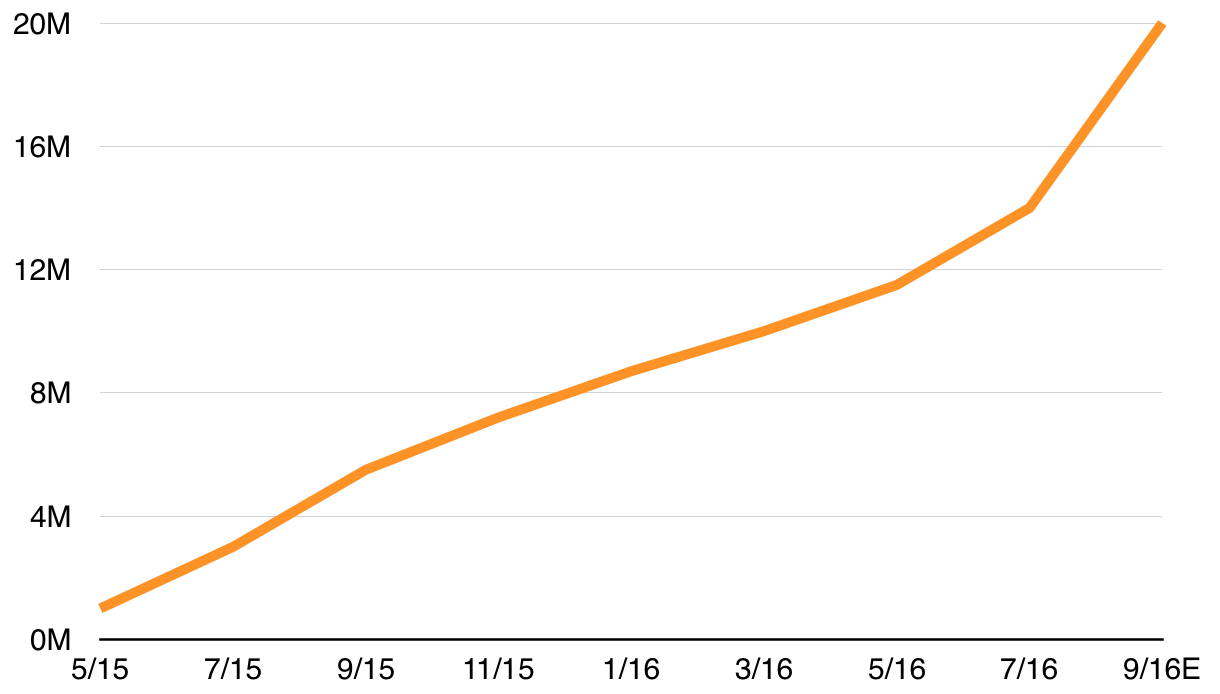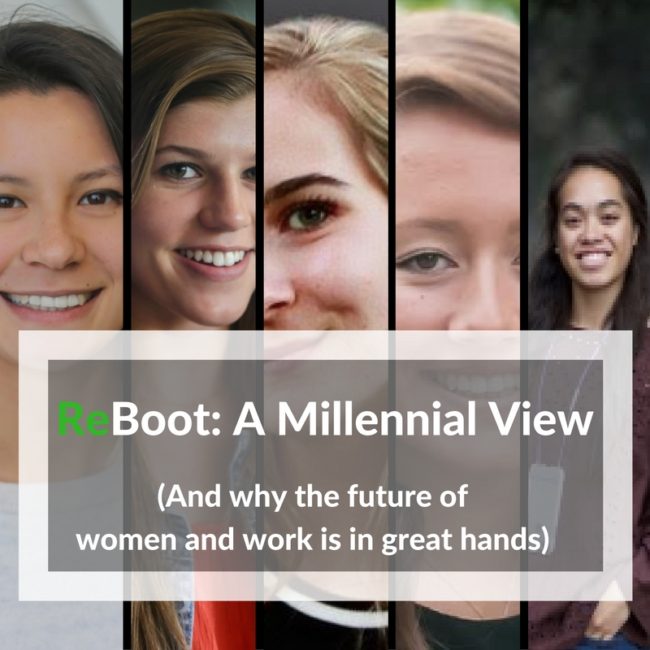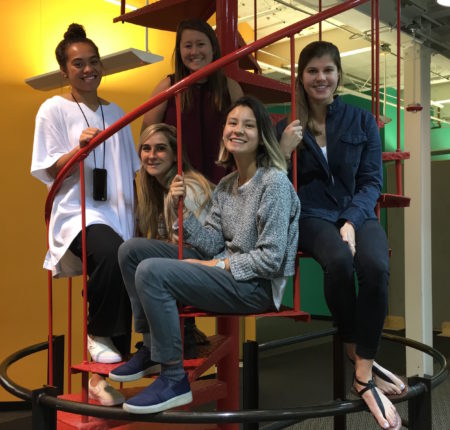Market Snapshot
| Indices | Week | YTD |
|---|
Toys and games are the prelude to serious ideas.
— Charles Eames, Pioneer of Modern Design
It is often said that perception defines reality. In recent weeks, you might say that Pokémon Go defines reality.
Just one day after its launch on July 6th, it surged to the top of the charts, grossing more than any other gaming app. Today, it has been downloaded over 100 million times and is reported to rake in more than $10 million per day.
The game — which allows you to capture, train, and trade virtual creatures on your smartphone that “appear” in the real world — has quickly put our physical and digital realities in the blender. It has sent people into streets and parks, onto beaches, and even into cemeteries, in pursuit of Pokémon.
You can find “Poke Stops” — hubs where the creatures abound — at the 9/11 memorial in New York City, in schools and churches, and everywhere in between. In O’Fallon, Missouri, a group of teenagers used the app to carry out armed robberies, employing the game’s geolocation feature to anticipate the location of unwitting victims.
Pokémon Go may ultimately come to a halt if the game proves to be a fad. But it has served as a strong signal that we are entering an era of Augmented and Virtual Reality (AR/VR). As the CEO of the game’s creator, Niantic Labs, observed in a recent interview with CB Insights, “There’s of course this fantastical Pokémon element, but really it’s enhancing your experience of going out for walk or doing something with friends. I think AR is something that can be with us all the time, that we can use during the day and in everything, from commerce to entertainment to social interactions.”
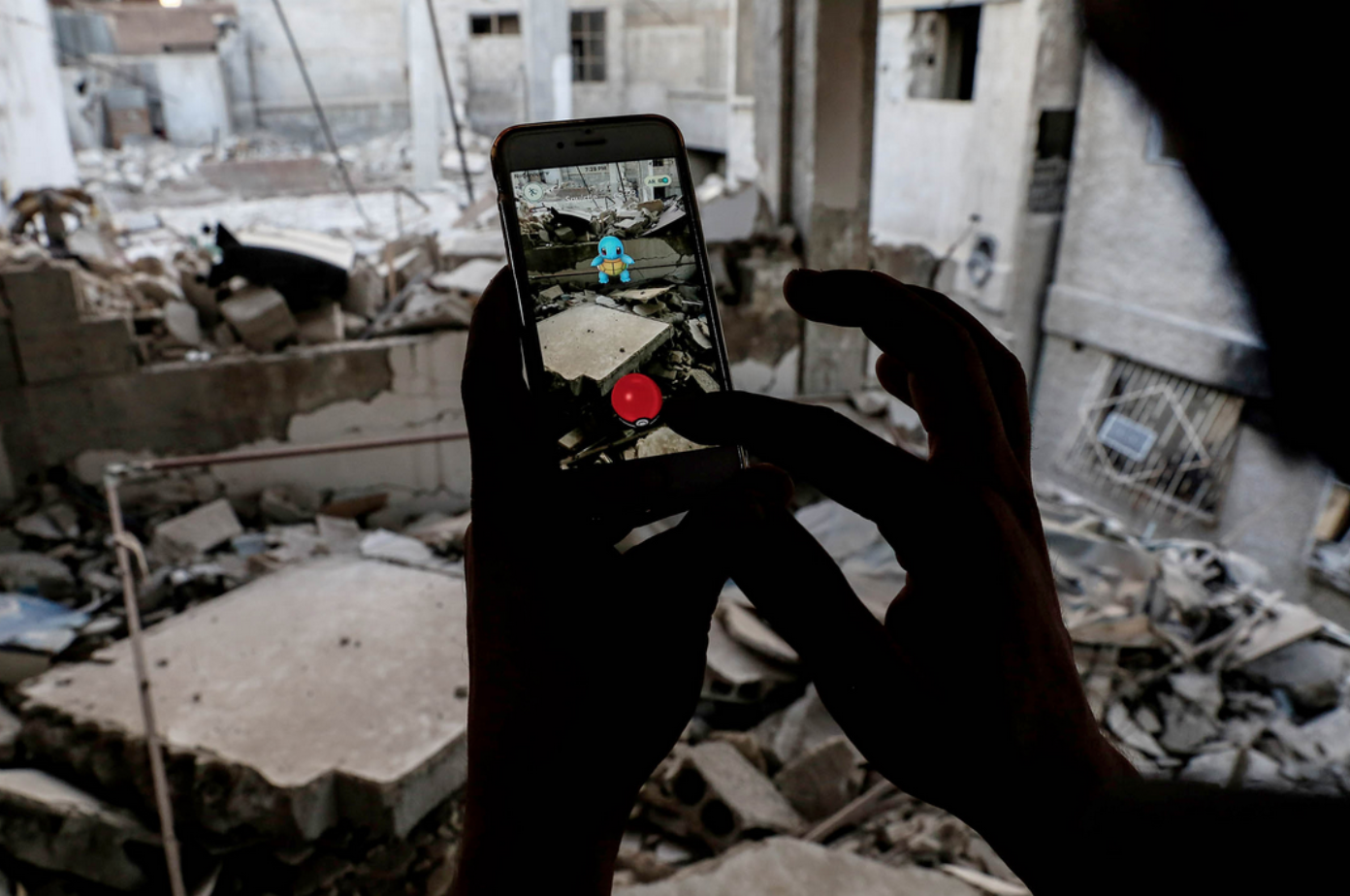
Virtually unknown just a few weeks ago, the Google spinoff Niantic quickly took the world by storm following the smash success of Pokémon Go, produced in collaboration with Nintendo, which owns the Pokémon franchise. Nintendo is also a strategic investor in Niantic, which has raised $25 million since its launch in 2011.
Nintendo’s stock initially skyrocketed after the release of Pokémon Go, adding $17 billion of market value in less than two weeks. But the video game giant warned in a July 22nd press release that the app would have a “limited” impact on its finances, because Nintendo didn’t really make the game. In fact, it only owns an estimated 13% of the economics. Nintendo’s stock fell 18% the day after the announcement.
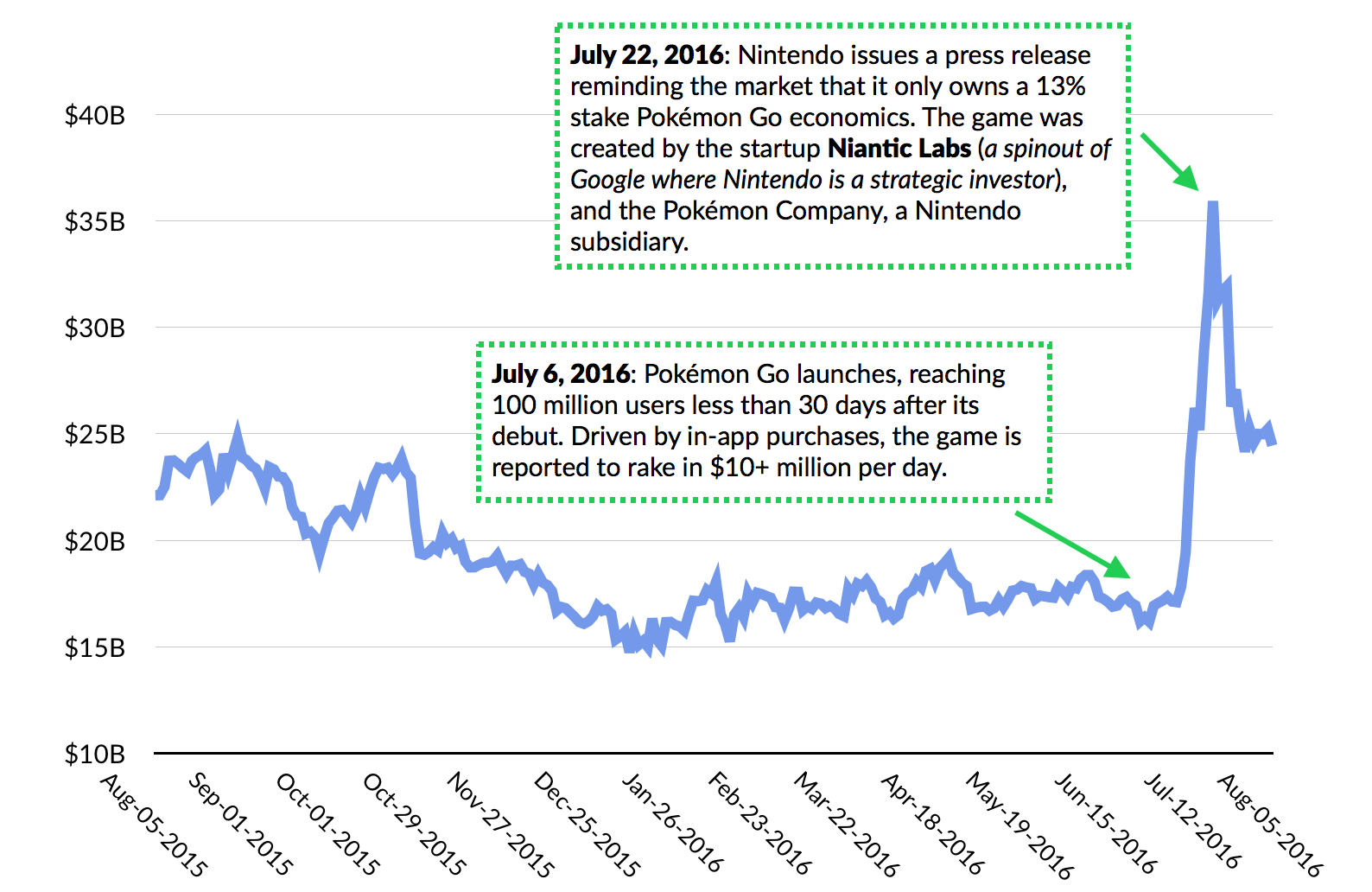
According to estimates from Citigroup, Pokémon Go is on track to generate over $740 million in revenue this year. It’s safe to say that Niantic is in the Unicorn Club. It’s also safe to say that it’s time to pay attention to the world of AR/VR.
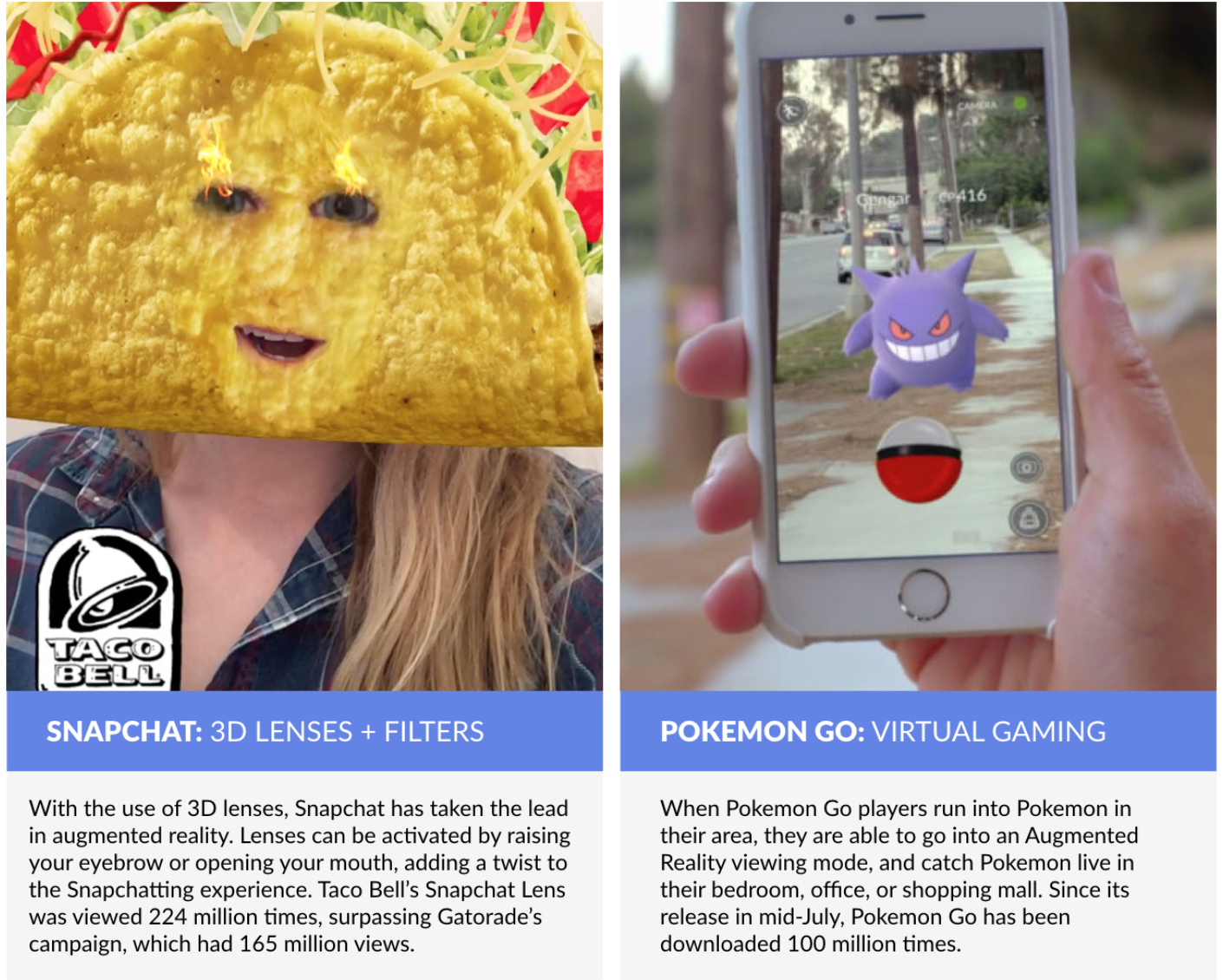
STATE OF PLAY
Virtual Reality (VR) had been pursued and promised since the 1950s, but the convergence of low-cost mobile hardware and powerful new software platforms is bringing it to life. In less than five years we are seeing ripple effects across digital media and beyond.
Oculus VR founder Palmer Luckey, a college dropout, created a Virtual Reality (VR) “prototype” in 2011 with a smartphone, two eyeglass lenses, duct tape, and a bucket. One year later, Luckey tried to raise $250,000 on Kickstarter and raked in $2.4 million. In 2014, Facebook bought his company for $2 billion and VR had seemingly arrived.
At the time, Mark Zuckerberg observed, “Every 10 to 15 years a new major computing platform arrives — we think that virtual and augmented reality are important parts of this upcoming next platform.”

CEO Palmer Luckey wasn’t the first dreamer to be enamored with a parallel digital universe. “Virtual” and “Augmented” reality have been promised since the 1950s, but the convergence of low-cost mobile hardware and powerful new software platforms is bringing it to life. Palmer picked the right point on the Moore’s Law curve to jump in. It is a fair bet that we will be seeing beyond our wildest dreams in short order.
A field of technology traditionally referred to as “Virtual Reality” has bifurcated into two core technology/design approaches: Virtual Reality (VR) and Augmented Reality (AR). VR is closed and fully immersive, while AR is open and partly immersive — you can see through and around it. Whereas VR puts users inside virtual worlds, AR puts virtual things into the real world.
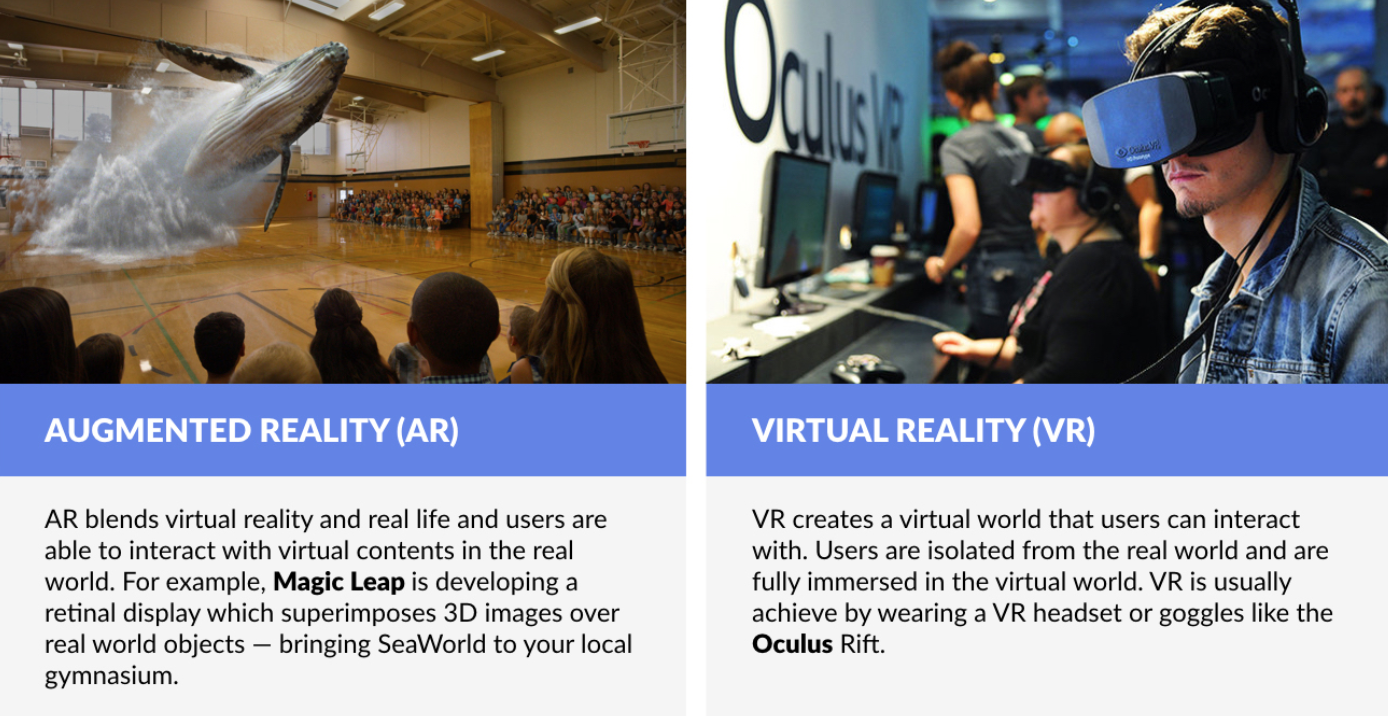
Today, there’s a big belief and a lot of momentum in the idea that first Virtual Reality, and ultimately Augmented Reality, are the next major platform in computing — in the same way that the World went from mainframe to PC to client server to web to mobile. You can already see the smartest companies in the world are deploying billions of dollars of capital around making this happen.
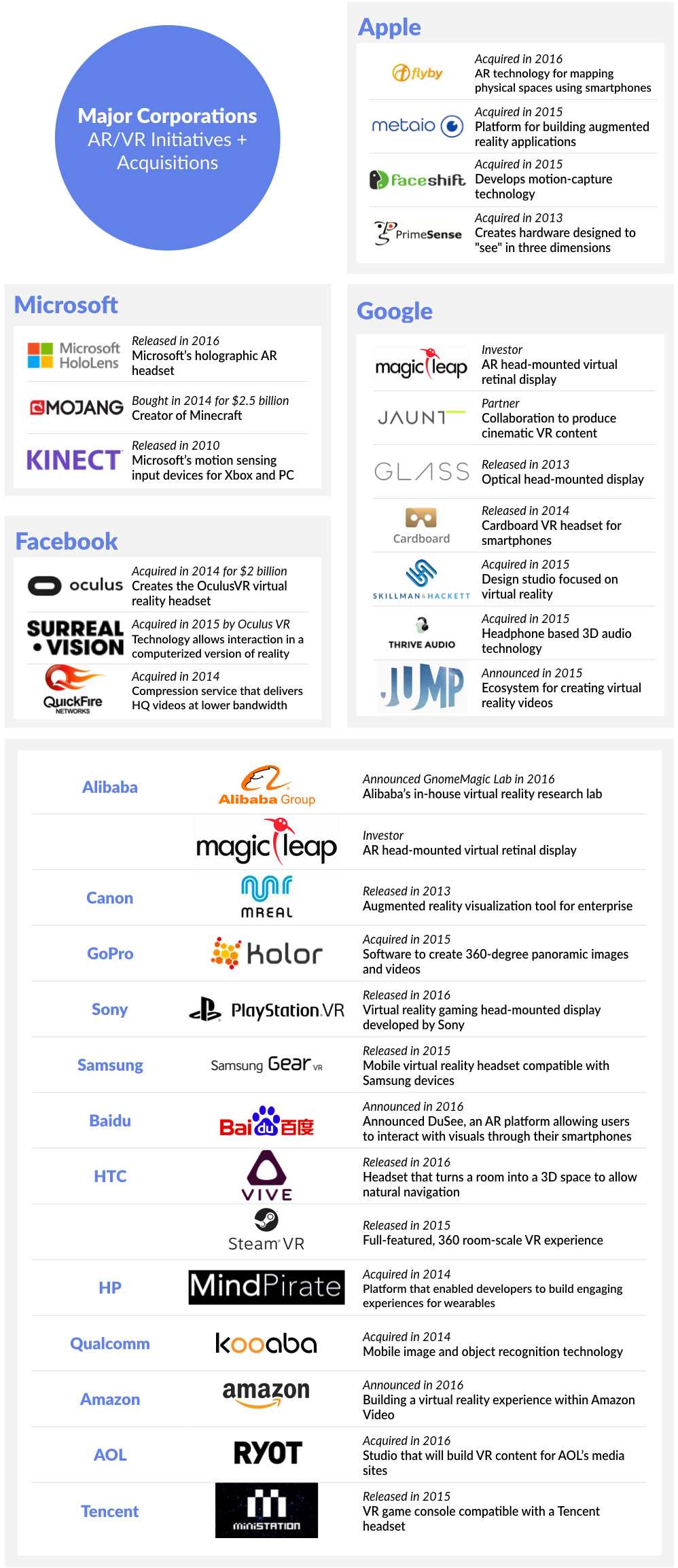
In recent years, AR/VR has primarily been thought of as a medium for hardcore gamers and tech evangelists, but you can increasingly see how it will impact a variety of industries, from entertainment to education, commercial real estate, and industrial design.
As the World increasingly adopts technology that enables you to experience an enhanced reality, physical experiences will increasingly be replaced by dollar apps in an app store. To this end, Goldman Sachs has recently projected that the AR/VR market may balloon to $80 billion by 2025. Not surprisingly, investment activity is following.
Investment Activity
AR/VR has traditionally been a difficult space to invest against. Until recently, there were really only been two options. You could invest in first generation consumer technology, which has historically moved rapidly towards commoditization. Or you could invest directly in companies creating broad content for the medium — things like video games and cinematic experiences, which tend to be highly cyclical, hit-driven, and high risk.
Today, we’re seeing companies emerge with nuanced content and business models, creating compelling investment opportunities.
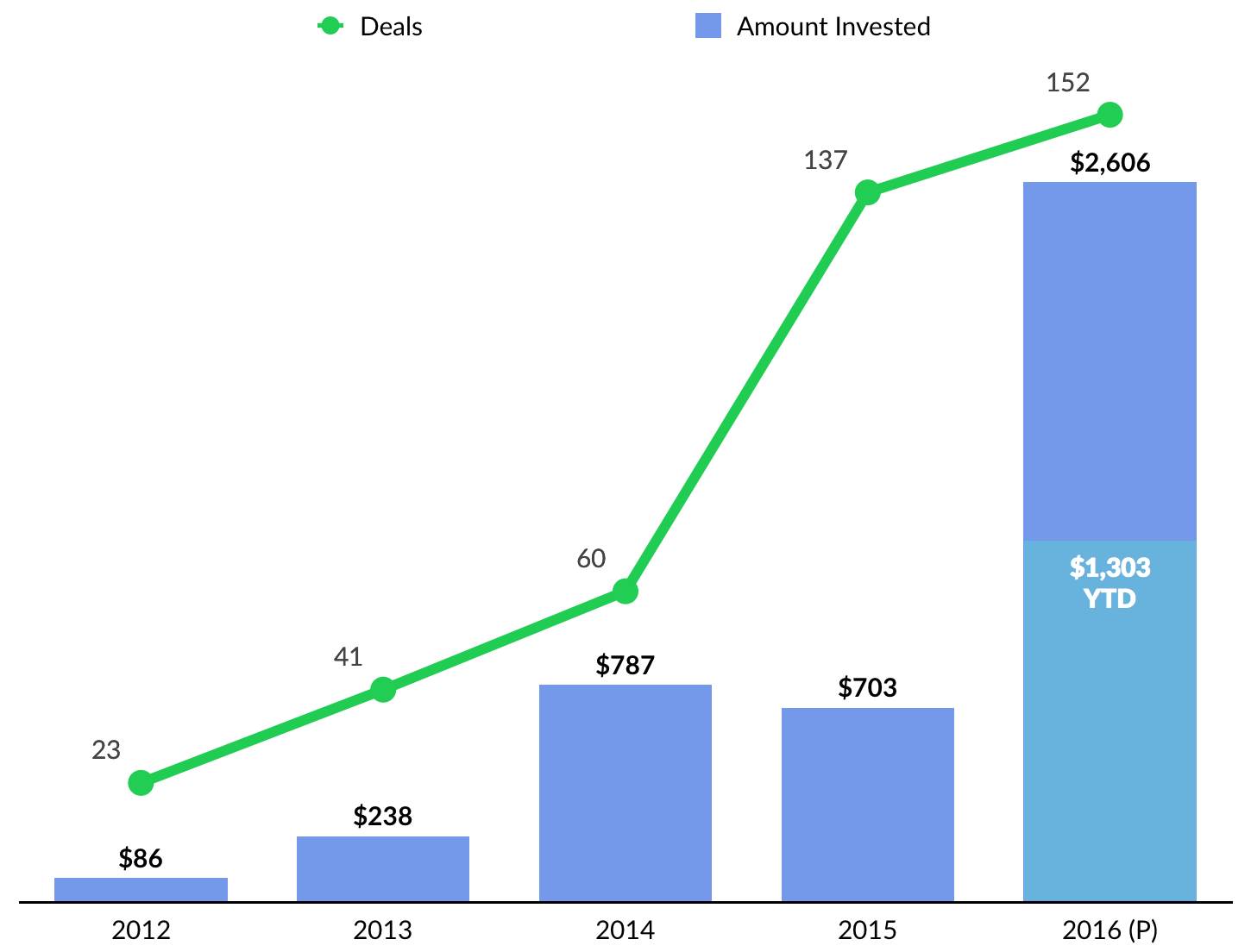
Source: CB Insights
At the halfway mark, 2016 saw $1.3 billion invested over 76 deals, which already translates to 85% growth over 2015′s funding total. Much of the boom in 2016 can be attributed to Magic Leap’s $793 million Series C financing in February. The stealth AR headset developer has now raised $1.4 billion in total funding.
Notable 2016 deals have including rounds to VR systems maker MindMaze ($100 million), mobile-based AR app Blippar ($54 million Series D), VR headset maker Baofeng Mojing ($34 million Series B), Meta ($50M Series B), OTOY ($37 million Series D), and The Virtual Reality Company ($23 million Series A).


Source: Bloomberg, CB Insights, GSV Asset Management
KEY APPLICATIONS
Media & Entertainment
If you go back 25 years, Adobe took the world from a predominantly analog view of media to digital. If you go farther back, Dolby created the standard for how audio is implemented not only in movies, but in just about every consumer device that incorporates audio. More recently, we’ve seen standard-setters like Unity, which is the platform that powers over 70% of today’s mobile, PC, and console-based games — including Pokémon Go.
Each of these companies represents a fundamentally enabling technology for their time and medium. Lytro is laying the foundation for the next generation of AR/VR content. Effectively, it is creating the picks and shovels for the digital miners of the industry. (Disclosure: GSV owns shares in Lytro)
WATCH REMARKS FROM LYTRO CEO JASON ROSENTHAL HERE
Jason Rosenthal Discusses the Future of Imaging and Augmented/Virtual Reality
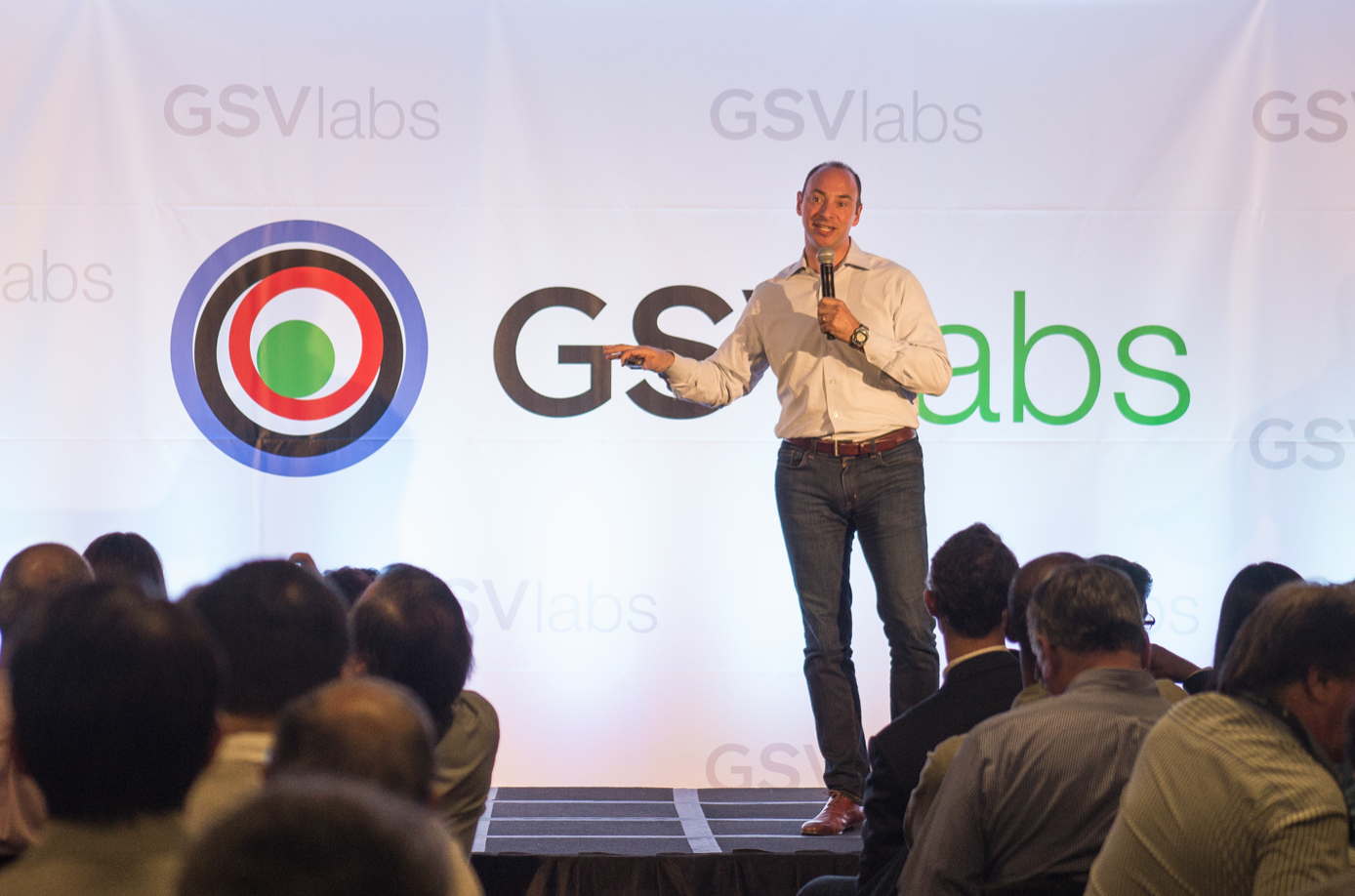
Consumers are watching more content on more devices than ever before. But if you look at how that content is being created, there hasn’t been a fundamental technological breakthrough in over 25 years, since the advent of computer graphics for the use of visual effects.
Take any popular series — from Game of Thrones to House of Cards — and you’ll find that it relies bringing together the live action world (e.g. actors and people captured in a real environment) with computer generated visual effects. If you look at how this process is done today, it’s based on a technology legacy that hasn’t evolved for decades.
Directors film actors awkwardly in front of a “Green Screen”. Teams of technicians then weave in complex, computer-generated backgrounds. The process is expensive, time-consuming, and tedious. The only way to make it scale is by adding people and money.
That’s where Lytro comes in.
With its groundbreaking “Light Field” technology, Lytro is introducing a new way to capture environments that bring together the physical world and the digital world. Rather than capturing a flat, two-dimensional image through a standard camera, Lytro captures every ray of light in a frame. It can map exactly where every ray of light is coming from, including the angle, reflection points, and where its going.

With this data captured, Lytro creates a highly accurate three-dimensional models of entire environments. It makes the real world work much more like computer graphics, giving artists unprecedented design capability and flexibility.
When you take a standard picture or film a movie, creators have to make a variety of fundamental decisions up front — like frame rate, focus, and exposure. Once you make them, you’re locked in. With Lytro’s technology, this dynamic completely changes. All of those creative decisions become an after-the-fact, controllable variable, and you can render content in three dimensions. Think of it as software eating cameras and imaging. It’s a story of better, faster, and cheaper.
AR/VR, is all about making consumers and professionals feel like they are fully immersed in an environment that doesn’t physically exist. Lytro is enabling the industry to deliver on that promise.
In the race to create entertainment platforms built on new AR/VR technology, early leaders like Facebook (Oculus VR), Sony (Project Morpheus VR), and HTC (Vive), have mainly focused on perfecting headset hardware, and then partnering with professional software developers to create premium content (e.g. Movies, Games, Training Applications, etc.). Alphabet (Google) has opted for a different approach.
In 2014, Google introduced its low-budget virtual reality platform, “Cardboard”, designed to make VR more immediately accessible through $5, easy-to-assemble kits that turn common Android smartphones into makeshift VR headsets. Subsequently, it introduced a new version for iPhones, and announced a partnership dubbed “Jump” with GoPro to bring VR content creation to the masses.

As Clay Bavor, Google’s vice president of product has said, “If you want to experience VR video, all you need is the YouTube app, your smartphone, and some cardboard.” Cardboard may not be the longterm answer, but its certainly seeding the market.
Education
AR/VR isn’t just a computing platform, or even a vehicle for mind-blowing entertainment (although this is a key piece of the puzzle). It was fundamentally a new medium for acquiring information and knowledge.
Language, arguably the most crucial technological advancement in our history, transformed learning from simple mimicry and emulation into the realm of complex ideas. Expression through language accelerated innovation. At the same time, it enabled us to develop abstract ideas that evolved into a shared culture.
Writing, and later the printing press, multiplied the power of language by creating access to the best ideas for a much broader audience. An outsourced device for “remembering,” the written word also expanded our inventory of ideas, which were no longer dependent on the storage capacity of the human brain. Film, and later video and video games, were important extensions of this concept. But all are still approximations of reality.
AR/VR represents a fundamental leap forward because it has the potential to shatter physical boundaries that separate the World of ideas and experience. It is going to be a powerful platform to learn anything… everything.
Ironically, while skeptics ponder how the new technology will be applied to education, we have a long tradition of learning by doing.
Since the Wright Brothers took their first flight in 1903, for example, the aviation industry has had a basic need to simulate flight experience before putting pilots in the air. With the advancement of computer, graphics, and gaming technology, aviation simulation has come a long way since 1910, when the best training method involved sitting in a half-barrel to simulate flight pitch.
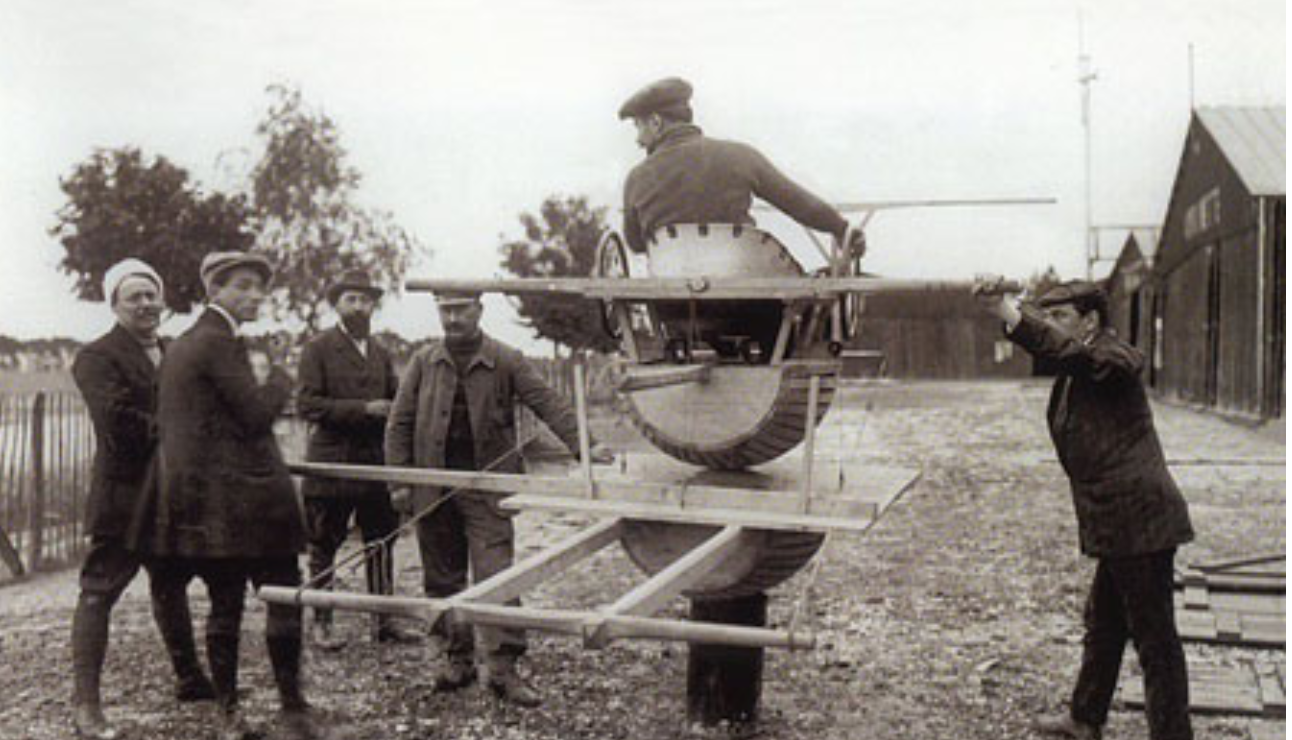
The most effective way to learn is often through hands-on experience and immersion. For one, cognitive research demonstrates conclusively that the more actively involved a person is in their educational environment (i.e. not sitting back and watching passively), the more information they retain. Intuitively, the closer you get to the “real thing,” the better you learn.
It is easier to master Mandarin if you live in Beijing. Or framed differently, how would you like to be a surgeon’s first patient after they learned their craft exclusively by watching YouTube videos — or even the best instructional videos ever made?

Learning by doing is a great idea, but the “real thing” is expensive and often impractical. Immersive education at scale was a fantasy. But Virtual Reality technology is approaching “magical” quality at mass market prices.
Top Neuroscience researcher, Dr. Adam Gazzaley (Director, Neuroscience Imaging Center, UCSF) has created a window to the future of education with his creation of “Body Brain Trainer.” It’s a brain game that interlaces interactive VR cognitive challenges with increasingly strenuous physical activity. It’s throwing a new light on physical education.
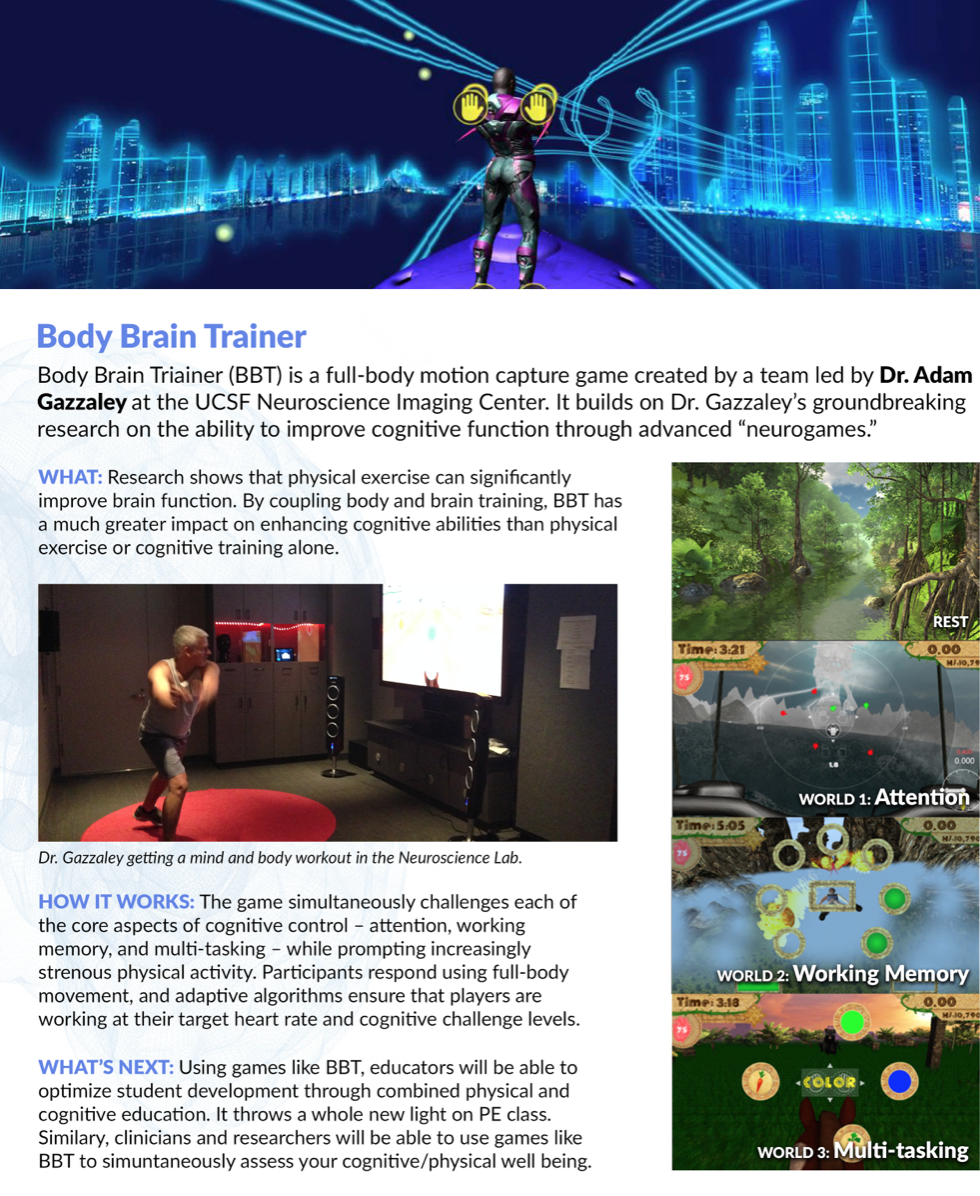
Design
AR/VR will increasingly enhance and accelerate design processes, from large corporations to emerging startups.
Ford, for example, has been using virtual reality technology to develop car designs since the year 2000. But in the last seven years, the 111-year old business has made virtual reality central to its automotive development, using Oculus technology.
Ford’s Immersion Lab is an advanced facility where automotive design professionals can don a virtual reality headset and explore various aspects of a concept car while colleagues watch what they experience on a large screen. The company’s technical design process normally begins with simple sketches, which are developed into complex designs, involving highly specialized engineering. Virtual reality can be brought in at any stage to test an idea.
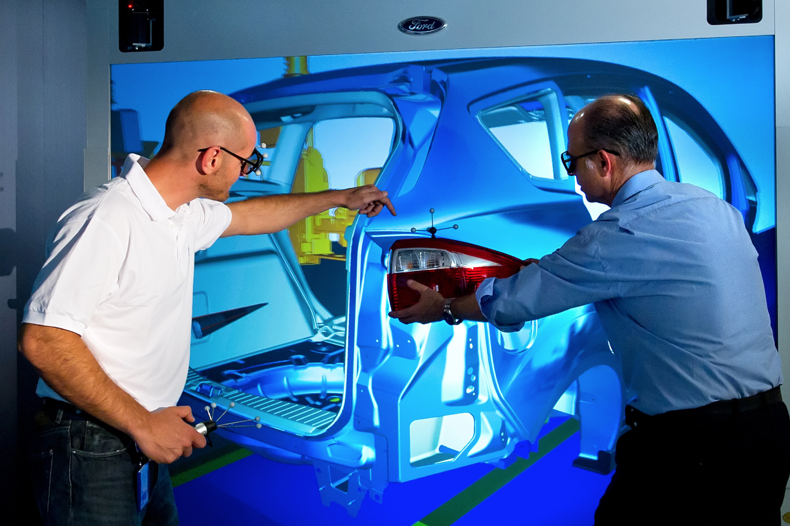
Ford virtual reality and advanced visualization technical specialist Elizabeth Baron has observed in interviews that the integration of VR into the design process has enabled the team to catch critical flaws that otherwise would have been missed and corrected later at great cost: “In the past we would have had to build a physical model to see how change would impact our design,” she said. “We are now a lot more agile in what we can understand right away, so we can understand problems that do come up a lot quicker.”
WHAT’S NEXT: FOLLOW THE RIVER
At the center of the next wave of virtual reality innovation is Rothenberg Ventures, founded by Mike Rothenberg, which recently launched River, a platform that accelerates VR and AR startups by supporting them with resources, mentorship, and community.
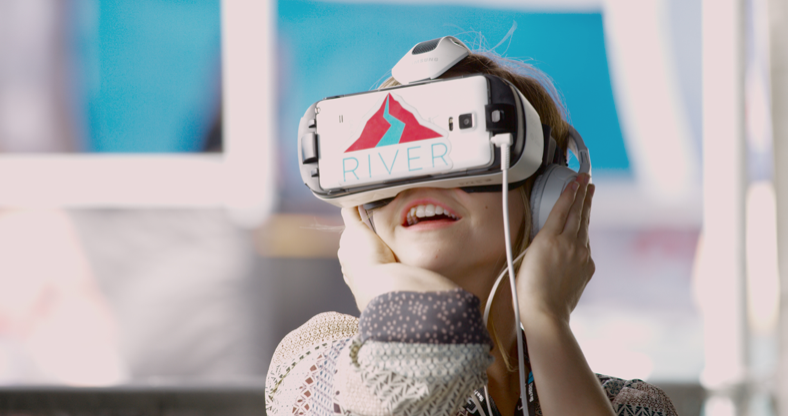
In the River manifesto, Rothenberg writes, “VR is a technology that will transform every industry over the next decade or two, just as the Internet was nascent twenty years ago but now is ubiquitous.”
As they seek to build real businesses in virtual reality, Rothenberg has identified four key segments for innovation:
- Infrastructure: Hardware and physical elements that constitute the Virtual Reality system
- Platforms: Outlets for creators and innovators to build on
- Applications: Communications, e-commerce, travel, healthcare, education, and training
- Content: Gaming, cinema, and interactive media
Rothenberg continues to press innovation in AR/VR forward, with recent investments including AltspaceVR, a next-gen communication platform enabling people to share real-time experiences, from gaming to streaming content and more.
As GSV continues to identify and invest in the most dynamic growth companies — the Stars of Tomorrow — AR/VR is quickly emerging as a megatrend that has the capacity to enhance and transform a variety of industries. Game changing entrepreneurs and startups are beginning to rise through channels like River and we look forward to the continued emergence of a new “reality”.
—
Stocks continued their delicate dance upwards, with the slow music paced by the beat of low GDP growth (just 2.1% for the Second Quarter) and negative earnings growth. The slow dancing was offset by my more people on the dance floor, with 255,000 new jobs created in July on top of the nearly 300,000 new jobs in June. For the week, NASDAQ approached an all-time high, advancing 1.1%. The S&P 500 was up 0.4% and the GSV 300 rose 1.2%

Bankers, who used to be in the Hamptons this time of year, were busy, highlighted by Uber selling its Chinese division to Didi for 20% of the combined business. Uber’s overall valuation now nearly $70 billion.
Verizon bought Fleetmatics for $2.4 billion, sending shares in the mobile logistics company up approximately 40%. Solar City was approved to be bought by Tesla for $2.8 billion. Perhaps the first bad sign from the offspring — the Gigafactory came out Friday afternoon saying it was going to take more time and more money to deliver on its production promise. Time Warner bought a 10% stake in Hulu for $500 million, joining fellow media companies Disney, Comcast, and Fox in its battle against Netflix.
The IPO Market continued to be open, with four new issues debuting last week. Pricing was was pretty tepid, with no IPO pricing above the range and essentially zero “pop.” Mutual fund investors have pulled $70 billion from equity funds to date, and ironically, have put a net $138 billion into bond funds, with their record low yields.
We continue to be BULLISH on growth equities, benefiting from strong comparisons to overall equities and bonds. The fact that growth stocks are going up with all of the negative sentiment is a great sign for future performance.
